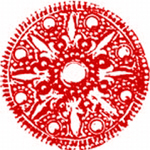
Buddhist Education Centre
Namo Tassa Bhagavato Arahato Sammasambuddhasa
Brief History of the Shakuhachi
Published by
Buddhist Education Centre
A.C.N. 005 701 806
A.B.N. 42 611 496 488
- 33 Brooking Street, Upwey, Victoria 3158, Australia
- Email: info@buddhisteducationcentre.org.au
- Website: buddhisteducationcentre.org.au
Associated Institution of the World Buddhist University
World Fellowship of Buddhists Regional Centre
Copyright – Buddhist Education Centre
May You Be Well And Happy

Summary
A short discourse on the history of the Shakuhachi, and basic instructions given by David Brown, Teacher of Aikido and Shakuhachi.
The Shakuhachi was used in Zen Buddhism, Zazen, as a way of meditation, played by wandering ‘priests of emptiness and nothingness’ in the Japanese Edo period, as well as an instrument to play for alms, and as a weapon. It’s practice continued into the Meiji period, and within folk music, and on into the modern era.
Like the Zen brush painting, the Shakuhachi appears deceptively simple, but is extremely difficult at first. Some notes so subtle, as to make the confining structure of Western music seem coarse in comparison. As an instrument of Meditation, the Shakuhachi imparts feelings of peace and empathy with nature, which can inspire the listener to give up habitual artificial stimulation, and become fully satisfied and renewed.

Content
Brief History of the Shakuhachi
David Brown, Teacher of Aikido and Shakuhachi was Guest Tutor at the Ch’an Academy on Saturday 5 September 1987. David began with a short discourse on the history of the Shakuhachi, followed by basic instruction.
The Shakuhachi was used in Zazen meditation and breath meditation by Priests and wanderers as an instrument to play for alms and as a weapon worn in the belt.
During the Edo period (1615 – 1865), the Shakuhachi was played by wandering ‘priests of emptiness and nothingness’; the Komuso. A Komuso group formed the Fukeshu, a sect of Zen Buddhism, and the Shakuhachi was not used for musical entertainment, but as a way of meditation. During the Meiji Restoration it became widespread in ensemble with Koto and Shamisen, and in folk music. Kurosawa Kinko (1710 – 1771) formed his school in Tokyo where it still exists today. The Meianryu was the original school of the Fuke sect and was founded in Kyoto in 1883. Nakao Tozan founded his school in Osaka in 1906.
The Shakuhachi, therefore, has a strict tradition, with each school having different notation and methods of playing. Because it is a musical instrument with a dynamic array of tones, and huge potential, it can also be played without an affiliation to any school.
One Shakuhachi shown by David Brown, bearing the seal of its Master Instrument Maker, Zenmura Kaizan of Japan, was dug partly from underground at the base of the bamboo, projecting strongly the feeling of earth element, harmonising with air Element – the breath. Some Shakuhachis remained gnarled and beautiful in their ‘urushi’ – Japanese lacquer.
The scale is basically pentatonic, with notes written in beautiful Calligraphy, e.g. Kan – ‘kite’ is the symbol used for higher octave.
The Shakuhachi, like Zen brush painting, appears deceptively simple, but is difficult at first. As David played the first piece, ‘Honte Joshi’, the immediate response was quietude and respect. One piece from the Kurosawa school is titled ‘Bell Ringing in the Empty Sky’. Even ‘Auld Lang Syne’ revealed its basic roots in windswept Scottish moors, when played on the Shakuhachi.
Some notes, so subtle, make the confining structure of western music seem coarse in comparison. Quarter and half-tones are used to create audible magic. Some sequences sounded like the sea breaking on the shore.
David also demonstrated the ‘pan pipes’ effect, reminiscent of ancient Inca music.
As an instrument of Meditation, the Shakuhachi, in conjunction with Ch’an (Zen) brush painting exhibitions, would impart such feelings of peace and empathy with nature on the perceiving westerner, one would be inspired to give up habitual artificial stimulation, and become fully satisfied and renewed by listening and looking.
David showed us several Shakuhachis he had made himself out of Australian woods such as satinwood and blackwood, one of which he presented to the Academy, together with instruction for its use. This is displayed in the Ch’an Academy.
David gave a special recital at the Second Anniversary of the Ch’an Academy, 6 February 1988.
Thank you David for sharing this beauty with us.